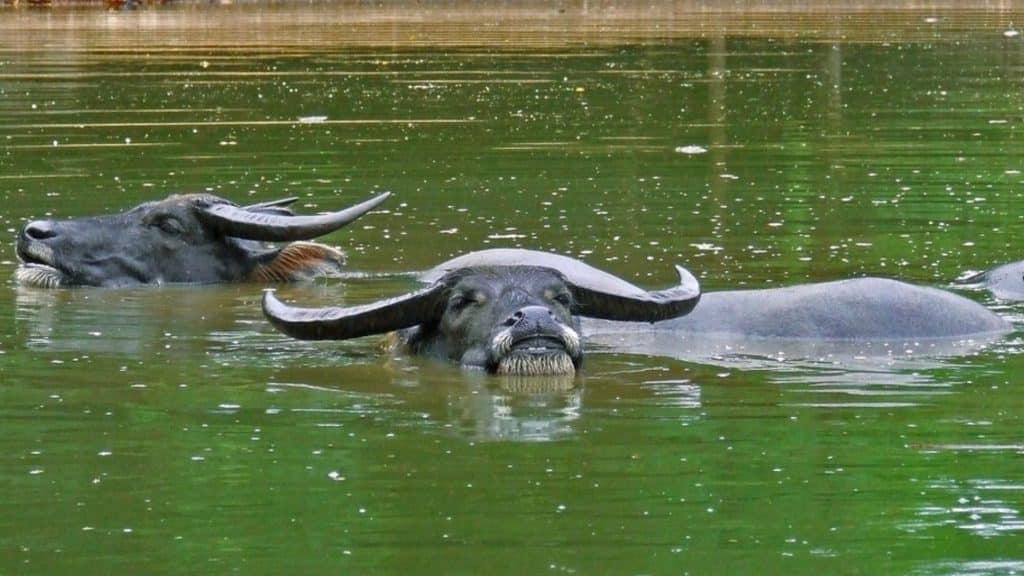Water buffaloes love water and are often seen cooling off in rivers or ponds.
But many people still wonder about one big question: How long can a water buffalo stay underwater without coming up for air?”
These strong animals have special ways to survive and move through water that might surprise you.
From swimming to holding their breath, water plays a big role in their daily life.
Let’s take a closer look at what makes water buffaloes so good in the water and how their body helps them stay under longer than you might think.
Understanding Water Buffalo
Water buffalo are large bovine animals native to the tropical and subtropical regions of Asia.
Characterized by their massive curved horns and substantial size, these impressive mammals have been domesticated for over 5,000 years.
Here are some physical features of the water buffalo:
| Feature | Description |
|---|---|
| Size | Large, weighing between 1,000 to 2,000 lbs (450 to 900 kg). |
| Body Shape | Stocky and muscular, designed for strength and endurance. |
| Horns | Long, curved horns that can reach up to 5 feet, depending on the species. |
| Nostrils | Wide, large nostrils that can be tightly closed when submerged underwater. |
| Legs & Hooves | Short, sturdy legs with wide hooves for navigating muddy, wet environments. |
| Lungs | Large lungs that help them stay submerged for longer periods by conserving oxygen. |
How Long Do Water Buffaloes Stay Underwater?
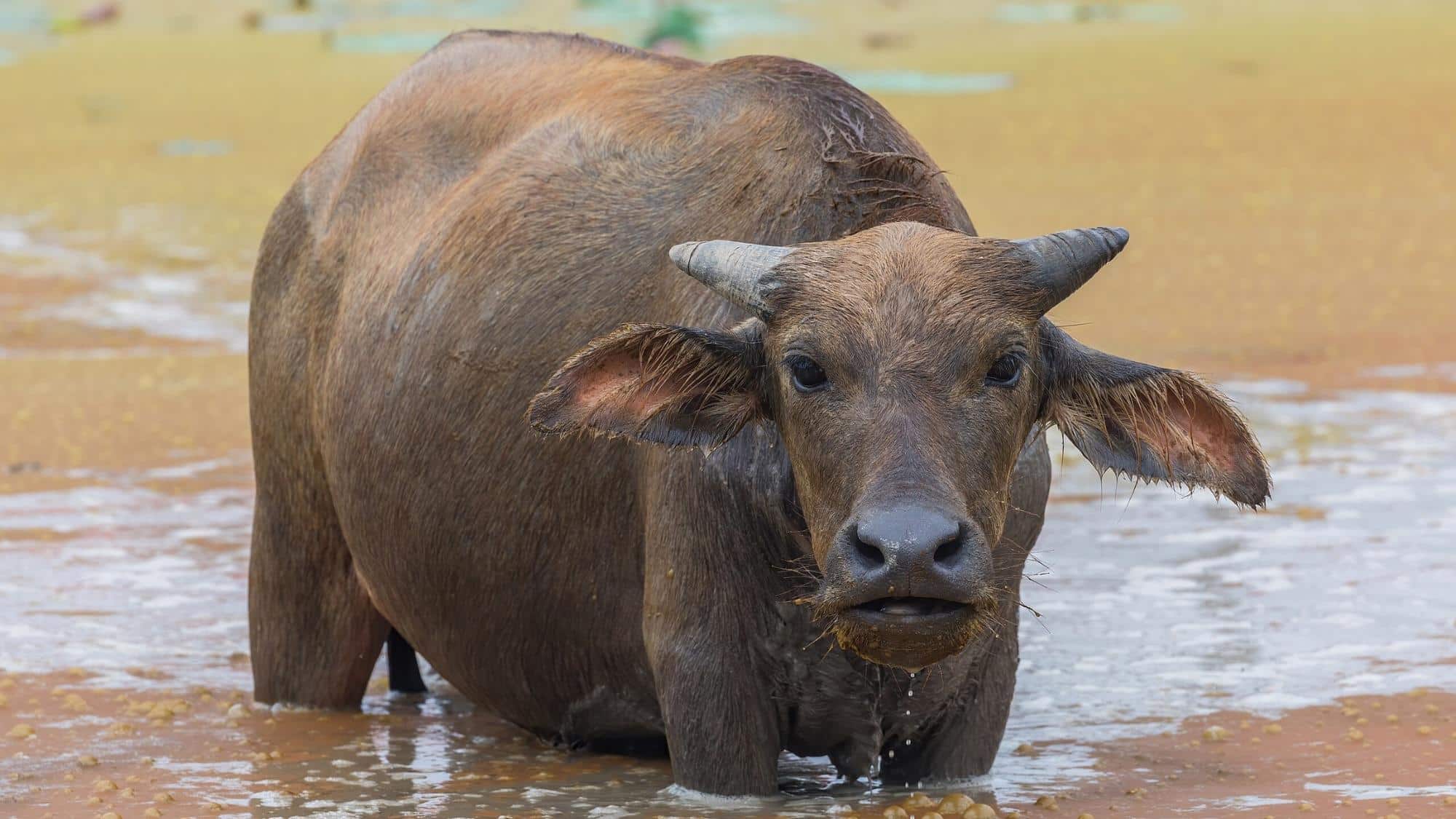
Water buffaloes are known for their impressive ability to stay submerged in water for extended periods, a crucial adaptation for surviving in hot climates and aquatic environments.
Typically, water buffaloes stay submerged for a few minutes at a time, but they can stay under for up to 5 minutes.
Their ability to hold their breath is impressive, though not as long as some other aquatic animals, as this behavior helps them cool off, escape predators, or forage for food.
Benefits of Swimming for Water Buffalo
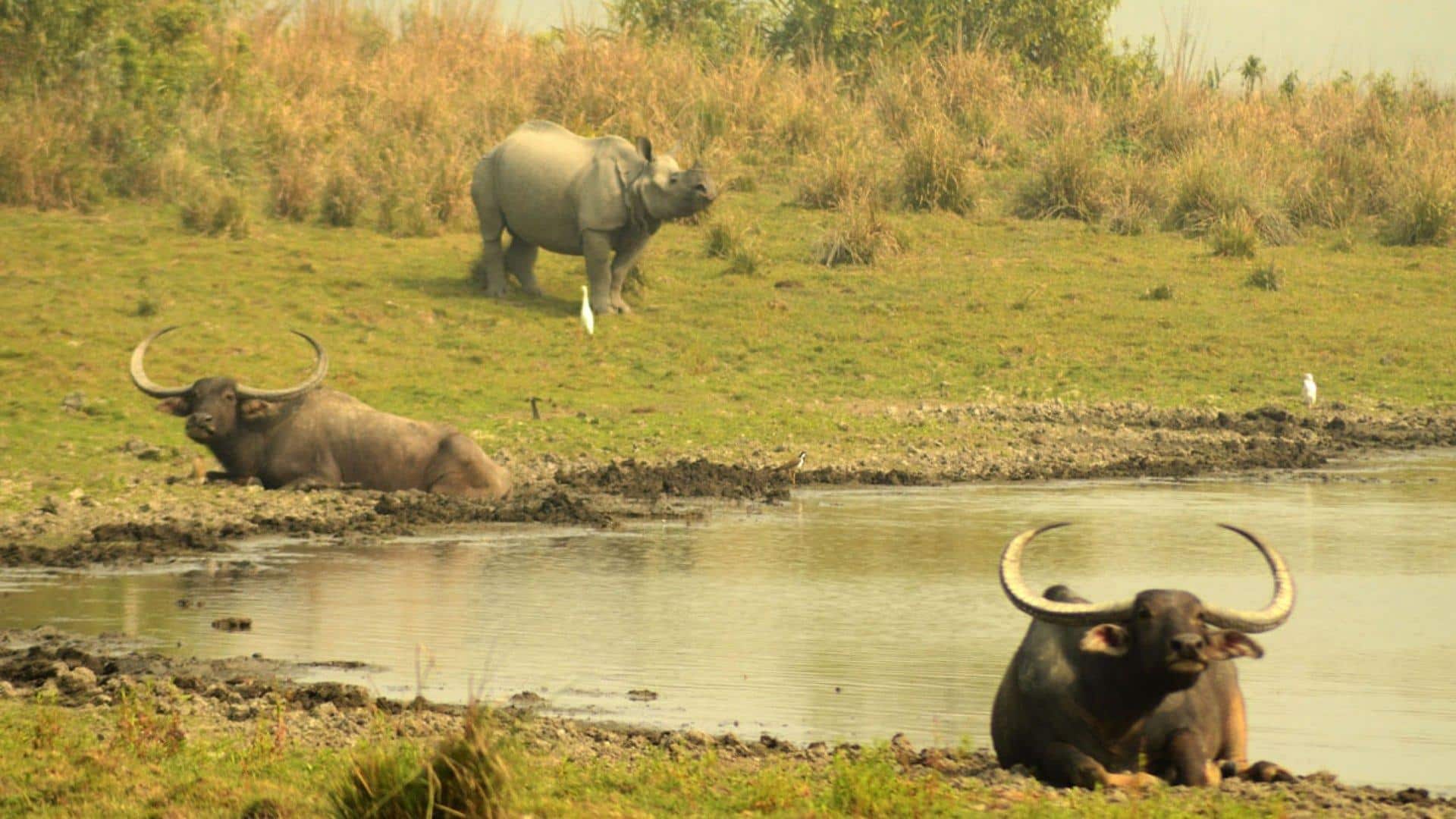
Water is a big part of life for water buffaloes, and swimming offers more value than most people might think.
- Cooling Off in Hot Weather: Swimming helps water buffaloes regulate their body temperature, especially during the hot summer months.
- Escape from Land Predators: Water buffaloes use swimming as a defense mechanism to avoid threats and predators on land.
- Foraging for Food in Aquatic Habitats: Swimming allows buffalo to reach and graze on aquatic plants, providing them with a unique and rich food source.
- Muscle Strengthening and Endurance Building: Swimming is a full-body exercise that helps water buffaloes build strength, stamina, and overall physical fitness.
- Hydration During Dry Periods: Access to water through swimming allows buffaloes to stay hydrated, particularly during dry spells or extreme heat.
- Social Interaction and Herd Bonding: Water buffaloes often swim together, which promotes bonding, teamwork, and social behavior within the herd.
The Science Behind Submersion
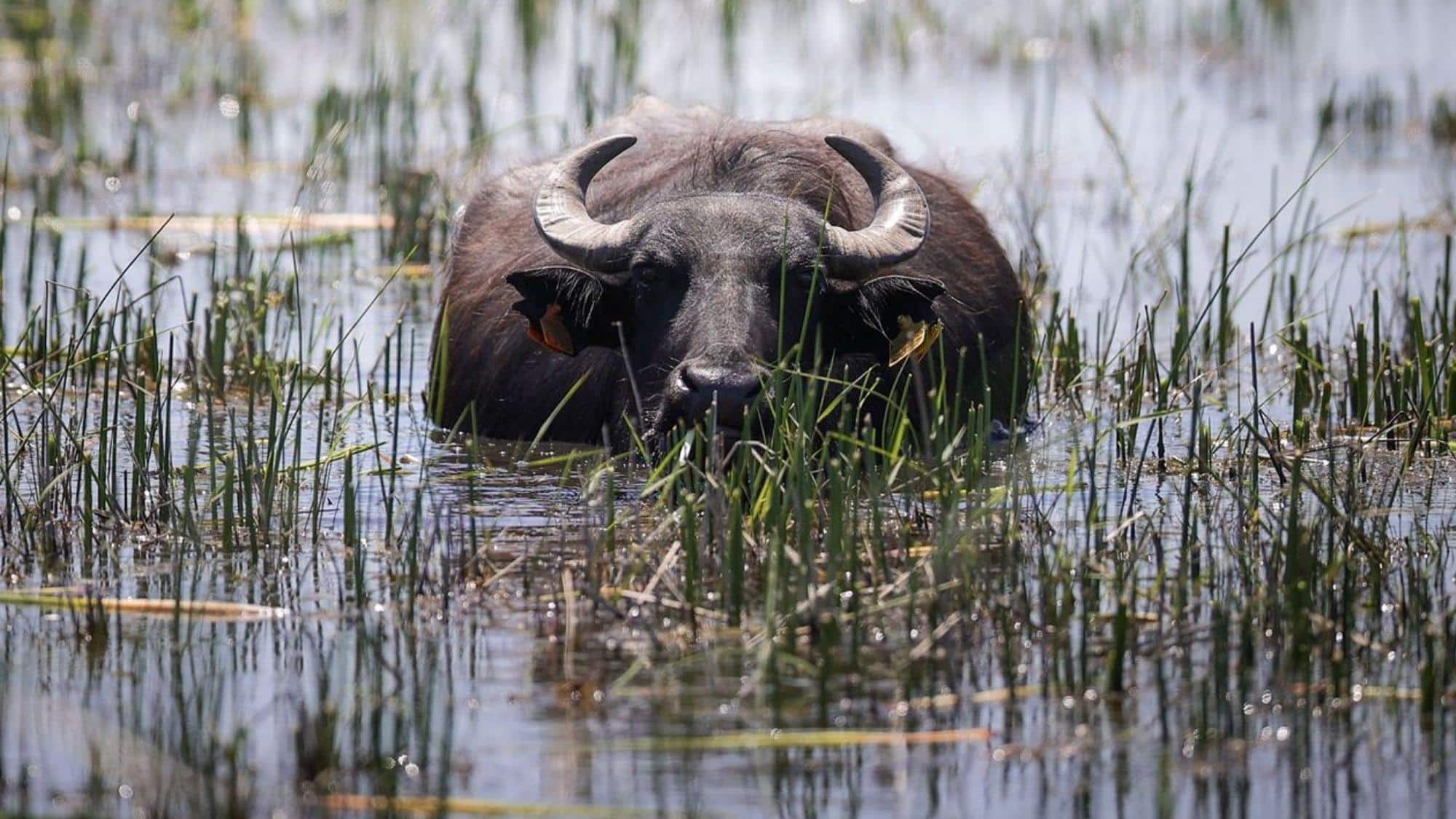
Water buffaloes can stay underwater longer than most people expect because their bodies are built to save oxygen and use it wisely.
When they go underwater, their heart rate slows down, which helps them use less oxygen and stay calm while submerged.
They also have strong lungs that hold more air, giving them extra oxygen to breathe while under the water.
Their bodies focus oxygen on important organs like the brain and heart while slowing down other systems to save energy.
Now let’s take a look at how water buffaloes compare to other animals that spend time underwater.
Comparing Water Buffalo Vs Other Animals
Water buffaloes are skilled swimmers, but some animals are even better at staying underwater. Here’s how they compare to other well-known species.
| Feature | Water Buffaloes | Elephants | Hippos |
|---|---|---|---|
| Size | 1,000 – 2,200 lbs | 4,000 – 14,000 lbs | 3,000 – 8,000 lbs |
| Habitat | Wetlands, rivers, and grasslands | Grasslands, forests | Rivers, lakes, and swamps |
| Diet | Herbivore (grass, plants) | Herbivore (grass, bark) | Herbivore (grass, plants) |
| Lifespan | 15 – 25 years | 60 – 70 years | 40 – 50 years |
| Swimming Ability | Up to 5 minutes submerged | Limited swimming | Submerged for up to 30 minutes |
Fun Facts About Water Buffalo’s Underwater Habits
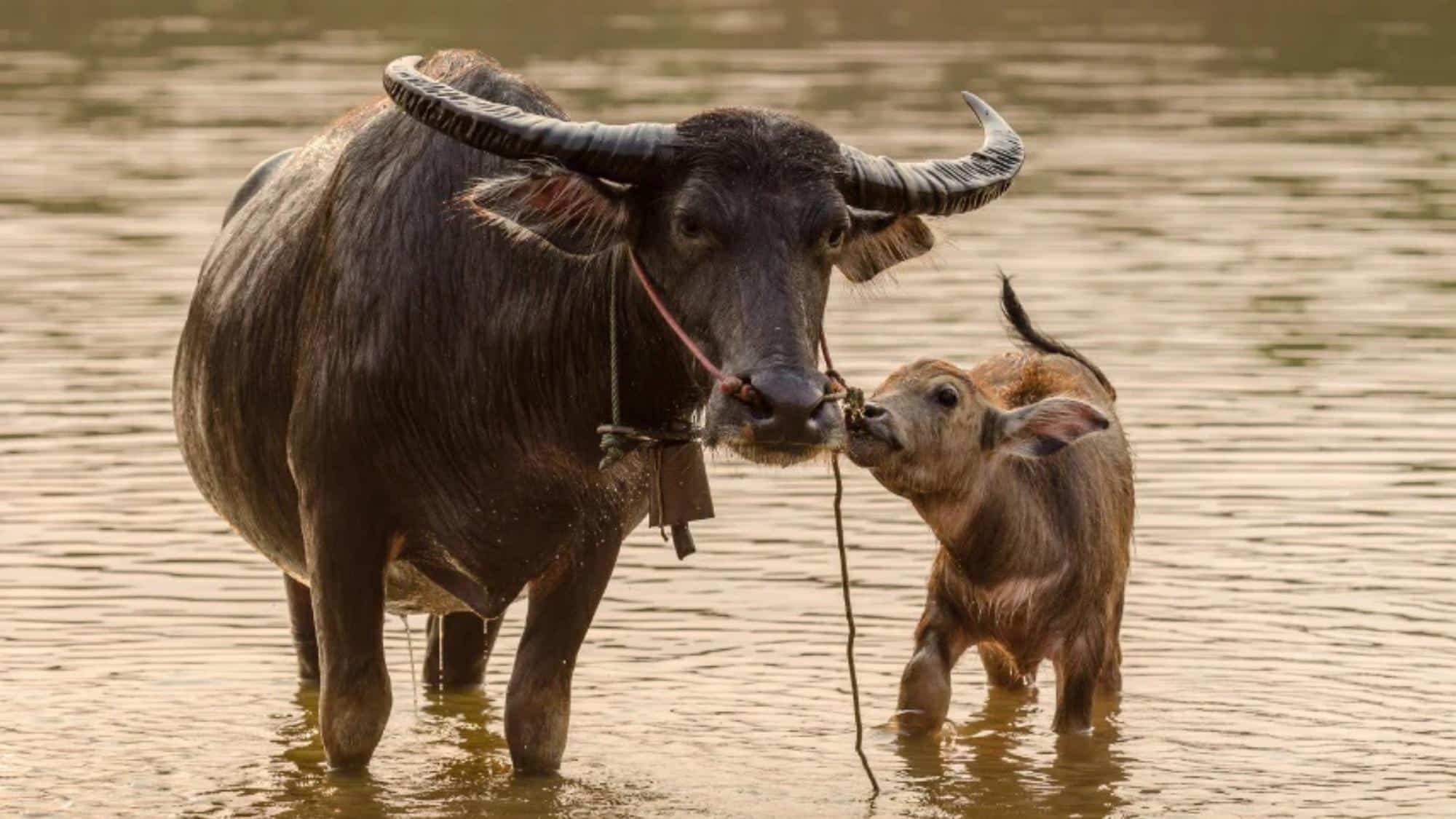
Water buffaloes do some surprising things when they’re in the water.
Here are some fun facts about their underwater habits you might not know.
- Natural Swimmers: Water buffaloes are instinctive swimmers, effortlessly navigating through water with strong strokes and their buoyant bodies.
- Sleep in Water: These animals can sleep while standing in shallow water, keeping themselves cool and protected from predators.
- Communicate in Water: Water buffaloes often use vocalizations and body language, even while submerged, to communicate with other members of their herd.
- Famous for Mud Baths: Besides swimming, water buffaloes enjoy rolling in mud, which helps protect their skin from parasites and sunburn.
Summing It Up
Water buffaloes are great at using water to stay safe, cool, and healthy.
Now that you know how long a water buffalo can stay underwater, it’s easy to see how this helps them live in hot places.
Watching them in rivers or ponds shows just how well they’ve learned to live in wet areas.
If you ever get the chance to see one up close, take a moment to observe their calm and clever ways in the water.

